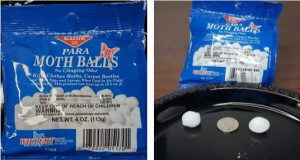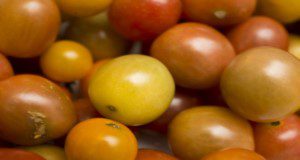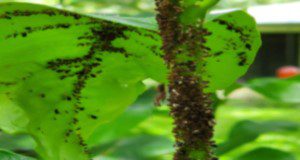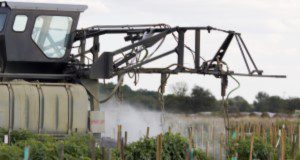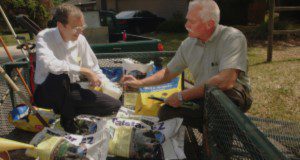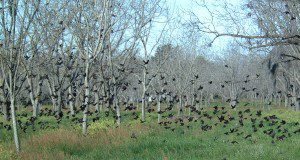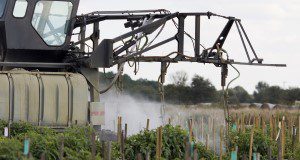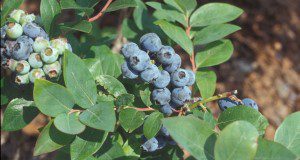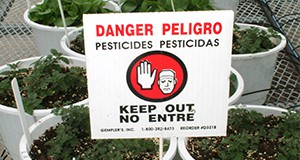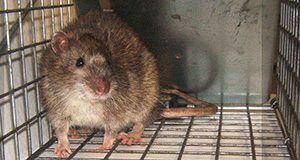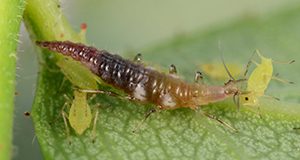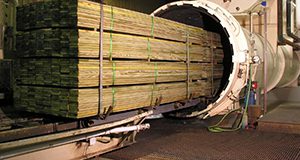The Microsoft Teams collaboration platform is popular among UF/IFAS faculty, researchers, Extension agents, and staff for its ease of use and utility for internal and external communication, collaboration, and meetings. The Teams webinar feature called live events can be used for a more controlled experience for large meetings, events, or CEU delivery. This new 5-page article will discuss the benefits and possible limitations of this service, specifically for offering online CEU material that meets Florida Department of Agriculture and Consumer Services (FDACS) guidelines for such trainings. Written by Brett W. Bultemeier and Joe Gasper and published by the UF/IFAS Pesticide Information Office.
https://edis.ifas.ufl.edu/pi290
Category: Pesticide Information
The Facts about Mothballs
Mothballs are widely available for purchase and familiar to many people. However, mothballs are one of the most misused products, and their misuse can cause harmful effects to people or the environment. This new 4-page publication of the UF/IFAS Pesticide Information Office will give the basics about what mothballs are, where they can be used, and their status as a pesticide. Written by Brett W. Bultemeier.
https://edis.ifas.ufl.edu/pi289
Herbicide Resistance Management in Florida Tomato Production
Herbicide resistance was historically not a significant issue in most horticultural crops because few herbicides were applied. Close proximity of agronomic crops and the loss of methyl bromide has led to a gradual increase in herbicide inputs and the increased occurrence of herbicide-resistant weeds in tomato fields. Very few herbicides are registered for tomato, and resistance is a major concern. This new 11-page publication of the UF/IFAS Horticultural Sciences Department provides a definition of herbicide resistance, explains how it develops, and provides management recommendations for tomato growers. It was written for growers and Extension agents, but the information may be of interest to anyone concerned about herbicide resistance in vegetable and small fruit crops. Written by Shaun M. Sharpe, Nathan S. Boyd, Ramdas G. Kanissery, and Peter J. Dittmar.
https://edis.ifas.ufl.edu/hs1398
Are Homemade “Pesticides” Legal?
Interest around pesticides and possible alternatives to them have increased in recent years. As individuals seek out possible alternatives, some consider making their own solutions to pest control. Homemade pesticide recipes abound online and are commonly seen in various social media platforms. This new 3-page publication of the UF/IFAS Pesticide Information Office looks at the legality of these mixes, when and where they can be used, and what other considerations need to be taken into account when utilizing these mixes. Written by Brett Bultemeier and Jason Ferrell.
https://edis.ifas.ufl.edu/pi288
Protective Eyewear for Pesticide Applicators
Protective eyewear is one of the most essential pieces of PPE an applicator can utilize when it is required. This new 3-page publication of the UF/IFAS Pesticide Information Office discusses the types of protective eyewear and how best to select and maintain these particular pieces of PPE. Written by Brett Bultemeier.
https://edis.ifas.ufl.edu/pi287
Delivering Secure CEU Training Utilizing Zoom
Delivering online, live CEU (Continuing Education Unit) training has become increasingly practical with the development of programs like Zoom. However, there are key differences between the two platforms that Zoom offers, Zoom Meeting and Zoom Webinar. Understanding the pros and cons of each platform and how to utilize each to deliver CEU content is key. Through descriptions and screenshots of the program, this new 7-page publication of the UF/IFAS Pesticide Information Office helps readers navigate the platforms and better understand which one best fits their needs. Written by Brett W. Bultemeier and Michelle Atkinson.
https://edis.ifas.ufl.edu/pi286
Tank-Mixing Pesticides without Disasters
Tank-mixing several pesticides is a common practice in conducting pest control. Tank mixes can consist of much more than just pesticides, such as fertilizers, micronutrients, and adjuvants. However, applicators must be aware of potential problems given that there are so many potential combinations when combining these products. Manufacturers cannot possibly test for all of these combinations, so both chemical and physical incompatibility are a concern with the practice. This new 4-page document, written by Frederick M. Fishel and published by the UF/IFAS Pesticide Information Office, describes some common-sense practices to help overcome costly tank-mixing errors.
https://edis.ifas.ufl.edu/pi285
Rodenticides
Rodenticides are pesticides designed to kill rodents, primarily mice and rats. However, rodents are not the only species that can be poisoned by rodenticides. Practically any mammal, including humans, can suffer severe effects from unintentional exposure to rodenticides. Rodenticides vary widely in the hazard they present even though they are all designed to kill animals that are physiologically comparable to humans. This new 4-page publication of the UF/IFAS Pesticide Information Office addresses those hazards for rodenticides currently registered in Florida. Written by Frederick M. Fishel.
https://edis.ifas.ufl.edu/pi284
Restricted Use Pesticides for Use in Florida
All pesticides are classified according to their toxicity, use pattern, and environmental effects. The two main classifications are unclassified use and restricted use, though unclassified pesticides are commonly referred to as general use pesticides. A restricted use pesticide is one that is for retail sale to and use by only certified applicators or persons under their direct supervision and only for those purposes covered by the applicator’s certification. This document will provide a listing of pesticide active ingredients registered in Florida that are classified as restricted and the reason(s) for the restricted use classification. This 4-page major revision was written by Frederick M. Fishel and published by the UF/IFAS Pesticide Information Office.
https://edis.ifas.ufl.edu/pi073
Worker Protection Standard: Records of Employee Safety Training
The EPA’s Worker Protection Standard for Agricultural Pesticides (WPS) covers pesticides used in the outdoor and enclosed-space production of plants on farms, forests, and nurseries, as well as greenhouses. The WPS requires agricultural employers to take steps to reduce pesticide-related risks when agricultural workers and pesticide handlers are exposed to these pesticides. The EPA has made several changes to the WPS since it was fully implemented in 1995, and this new 3-page document addresses maintaining records of worker and handler training under the revised WPS, including a sample employee-training verification. Written by Frederick M. Fishel and published by the UF/IFAS Pesticide Information Office.
https://edis.ifas.ufl.edu/pi283
Toxicity of Common Indoor Household Insecticides Registered in Florida
Insecticides are designed to control insect pests, but they can also be toxic (poisonous) to desirable plants and animals, including humans. Some pesticides are so highly toxic that very small quantities can kill a person, and almost any pesticide can make people ill if they are exposed to a sufficient amount. Because even safe pesticides, such as those intended for household use, can irritate the skin, eyes, nose, or mouth, it is a good idea to understand how pesticides can be toxic so you can follow practices designed to reduce or eliminate your exposure to them. This new 3-page document addresses the acute toxicity of common indoor household insecticide active ingredients registered in Florida and provides a table with mammalian toxicity values for each of these insecticides. Written by Frederick M. Fishel and published by the UF/IFAS Pesticide Information office.
https://edis.ifas.ufl.edu/pi282
Avicides
By and large, birds are beneficial because they provide enjoyment and recreation to humans and are vital to ecosystem balance. However, occasionally some species can compete with human interests. When these situations occur, some forms of control may become necessary. Avicides are pesticides designed to kill or repel pest birds. This new 2-page document addresses those avicides currently registered for use in Florida. Written by Frederick M. Fishel and published by the UF/IFAS Pesticide Information Office.
https://edis.ifas.ufl.edu/pi281
Pesticide Recordkeeping Form for Florida Applicators
This new 5-page document provides a form containing the required elements to include on a record of pesticide application for meeting the restricted use pesticide and Worker Protection Standard (WPS) requirements. An example application record and an explanation of the required elements is provided. This is not a required form because there are other methods to keep records if they contain the required information. Handwritten notes, electronic records, and other recordkeeping software systems are also acceptable. Written by Frederick M. Fishel and published by the UF/IFAS Agronomy Department.
http://edis.ifas.ufl.edu/pi280
Florida Blueberry Leaf Disease Guide
Southern highbush blueberry (SHB) cultivars are commercially grown throughout much of Florida, in both deciduous and evergreen production systems. In both systems, leaves can be damaged by many factors including environmental conditions, chemical applications, insects, and diseases. This new 12-page publication of the UF/IFAS Plant Pathology Department includes basic information to assist growers in determining 1) the likely cause (fungal, viral, algal, or bacterial) of leaf symptoms, 2) when specific leaf spots are likely to occur, 3) characteristic symptoms of common leaf problems, and 4) some of the management options that are available. Written by Douglas A. Phillips, Norma C. Flor, and Philip F. Harmon.
http://edis.ifas.ufl.edu/pp348
Oxytetracycline hydrochloride (OTC-HCl) application for control of palm phytoplasmas
Phytoplasma diseases of palms are a major threat to the Florida nursery and landscaping industries. Historically, lethal yellowing has killed millions of coconut palms throughout the Caribbean and has been causing decline of over 30 species of palm in Florida since it was introduced to the state in the first half of the 20th century. In 2006, lethal bronzing disease was discovered on the west coast of Florida near Tampa. Currently, the only two management options available for control of phytoplasmas is an aggressive sampling strategy followed by consistent tree removal and injections of oxytetracycline hydrochloride, or OTC. This 2-page fact sheet written by Brian W. Bahder and Ericka E. Helmick and published by the UF/IFAS Entomology and Nematology Department seeks to provide a source of information and instruction on the injection of OTC into palm trunks.
http://edis.ifas.ufl.edu/in1240
New Paraquat Requirements
This 2-page document addresses the mitigation measures being undertaken by the EPA which will become new labeling requirements for paraquat (one of the most widely used herbicides registered in the United States) products. Written by Frederick M. Fishel and published by the UF/IFAS Agronomy Department, November 2018.
http://edis.ifas.ufl.edu/pi279
Licensing of Commensal Rodent Trappers
The Florida Department of Agriculture and Consumer Services’ Bureau of Licensing and Enforcement administers Limited Certification Categories to certify Governmental or Private applicators. This 2-page document discusses the Limited Commercial Wildlife Trapper Certificate. Written by Frederick M. Fishel and published by the UF/IFAS Agronomy Department, October 2018.
http://edis.ifas.ufl.edu/pi278
Natural Products for Managing Landscape and Garden Pests in Florida
Pest control professionals and homeowners throughout Florida and the southeastern US are seeking effective options that are safer for people and the environment than some conventional synthetic pesticides. There is also rising interest in organic gardening, which relies on natural pesticides. This 13-page fact sheet describes natural products for use in residential landscapes and gardens. Written by Matthew A. Borden, Eileen A. Buss, Sydney G. Park Brown, and Adam G. Dale, and published by the UF/IFAS Department of Entomology and Nematology, revised September 2018.
http://edis.ifas.ufl.edu/in197
Clean the Sprayer to Avoid Crop Injury
The objective of this 5-page document is to present the correct clean-out procedure for spray equipment following pesticide use. Written by Frederick M. Fishel and published by the UF/IFAS Agronomy Department, August 2018.
http://edis.ifas.ufl.edu/pi277
Wood Preservatives
This 6-page document describes the purpose of applying preservatives to various wood products. A description of wood preservatives registered for use in Florida is also provided. Written by Frederick M. Fishel and published by the UF/IFAS Agronomy Department, July 2018.
https://edis.ifas.ufl.edu/pi276

